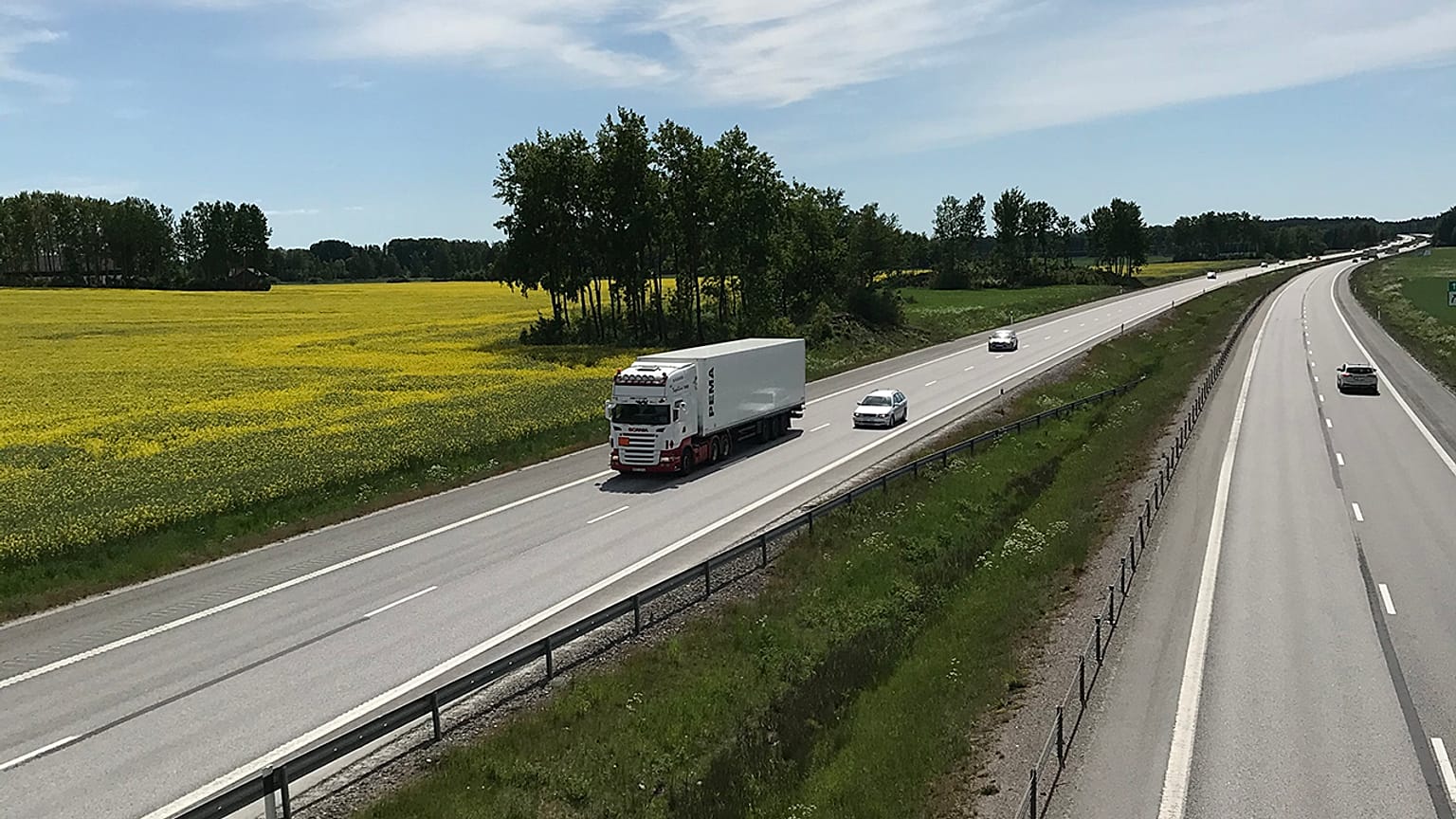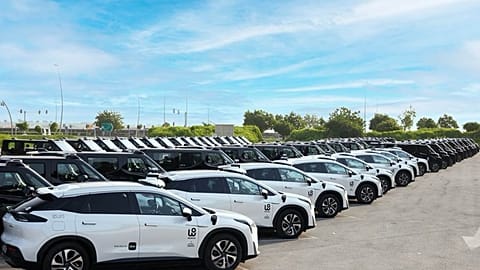The first of its kind in the world, the e-motorway may lead to an expansion of a further 3,000 km of electric roads in Sweden by 2035.
As the EU passed a landmark law last month to require all new cars sold to have zero CO2 emissions from 2035, European countries are rushing to prepare the infrastructure needed for fossil fuel-free mobility.
And Sweden is now turning a highway into a permanent electrified road - the first of its kind in the world.
On an electric road, cars and trucks can recharge while driving.
Experts say dynamic charging allows them to travel longer distances with smaller batteries, and to avoid waiting at charging stations.
The Scandinavian country has pioneered electrified roads through several pilot projects including the world's first temporary electric road.
"We think the electrification solution is the way forward for decarbonising the transport sector and we are working with a number of solutions," Jan Pettersson, Director of Strategic Development at Trafikverket, the Swedish transport administration, told Euronews Next.
The chosen motorway, European route E20, connects logistic hubs between Hallsberg and Örebro, located in the middle of the country’s three major cities, Stockholm, Gothenburg, and Malmö.
How does it work?
The project is currently at the procurement stage and is planned to be built by 2025.
The charging method for E20 hasn’t been decided but there are three types of charging: catenary system, conductive (ground-based) system, and inductive system.
The catenary system uses overhead wires to provide electricity to a special kind of bus or tram and therefore can only be used for heavy-duty vehicles.
Conductive charging, on the other hand, works both for heavy-duty vehicles and private cars as long as there is a conduction system such as a rail. The vehicles are charged through a stick that touches the rail.
In 2018, Trafikverket inaugurated the world's first charging rail for electric vehicles on public roads as a pilot between Stockholm’s Arlanda airport and a logistic logistics area in Rosersberg.
Along a 2 km long stretch, an electrical rail has been milled into the asphalt on which electric trucks lower a moving arm that receives power.
The inductive charging system uses special equipment buried underneath the road that sends electricity to a coil in the electric vehicle. The coil in the vehicle then uses that electricity to charge the battery.
In 2020, Trafikverket built a wireless electric road for heavy trucks and buses in the island city of Visby.
Potential benefits for private cars
Pettersson says the world is facing a "special challenge" of keeping heavy vehicles charged.
"If you are going to have only static charging full battery solution for heavy-duty vehicles, you will get vehicles with a huge amount of batteries that the vehicles need to carry," he said.
While much of the Electric Road System (ERS) focuses on trucks, a recent study suggested that private cars could also benefit.
The study simulated the movement patterns of 412 privately driven cars on parts of Swedish national and European roads and found that combining home charing with dynamic charing can reduce the size of the battery by up to 70 per cent.
Researchers behind the study also say that not all roads in Sweden need to be electrified; doing so on only 25 per cent of all roads would be efficient for the system to work.
This was the first attempt to simulate the electric road system (ERS) with real-life driving patterns.
But the researchers point out that the ERS may not be for everyone.
"The required battery range with ERS differs from urban to rural residence, meaning the drivers that are living near to the city centre would have smaller batteries because they are more approximate to the ERS and they will gain more," Dr Wasim Shoman, Researcher at the Physical Resource Theory division at the Chalmers University of Technology told Euronews Next.
Shoman says the difference in battery range between these two types of residents could be up to 20 per cent.
He also says that the technology is still maturing and the study assumes certain conditions.
"But with enough development, I think they could reach such properties," he added.
Other countries like Italy, the UK, the United States, and India are doubling down on building ERS systems.
With plans to have an expansion of a further 3,000 km of electric road by 2045, Sweden has partnered with Germany and France to exchange experience through authority and research collaborations on electric roads.
Germany and Sweden have had demonstration facilities on public roads for several years, and France plans to procure a pilot section with an electric road.
For more on this story, watch the video in the media player above.


















